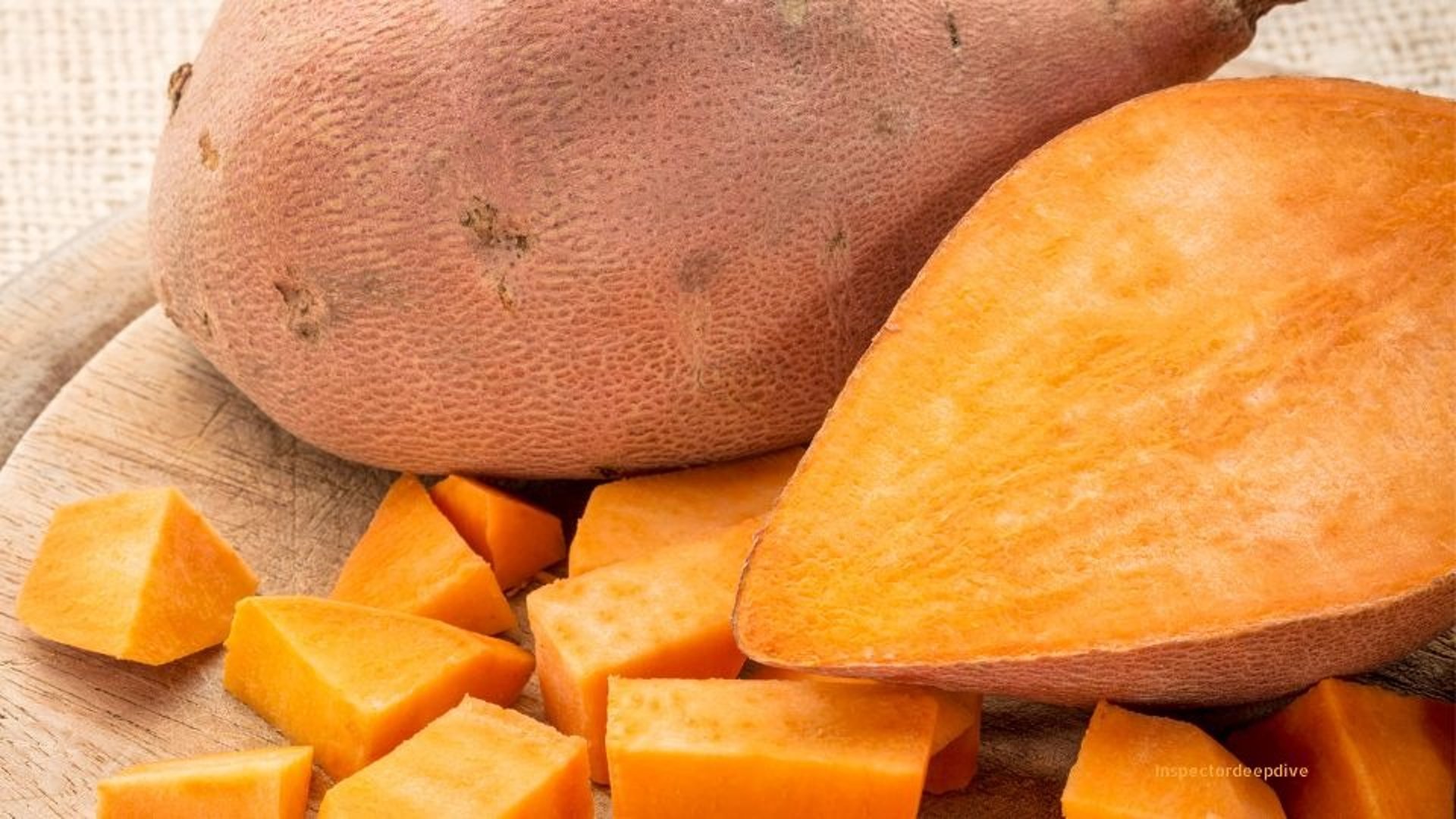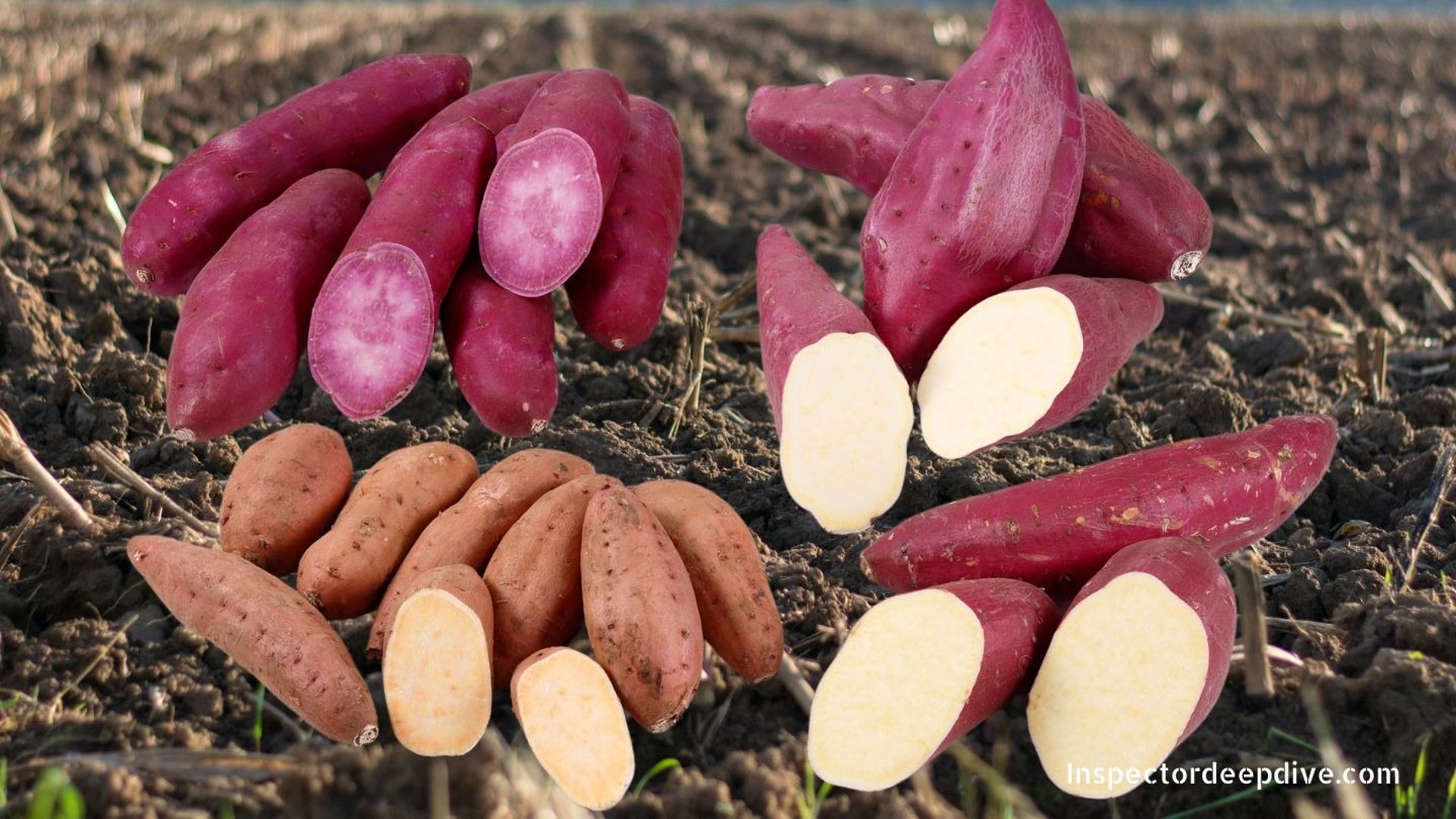
Sweet Potato: Unlock the Power of This Fiber-Rich Superfood

Scientific name: Ipomoea batatas
Family: Convolvulaceae
A nutrient-dense, naturally sweet root vegetable high in beta‑carotene, fiber, potassium and complex carbohydrates versatile for sweet and savory dishes.
What it is
Sweet potato is a starchy, sweet-flavored storage root (tuberous root). It is botanically distinct from true potatoes and often confused with yams. Sweet potatoes are prized for their color, natural sweetness and nutrient density.
Where it comes from
Origin: Central and South America, cultivated for thousands of years.
Today: Grown worldwide in tropical, subtropical and some temperate regions. Major producers include China, parts of Africa, and the United States.
How many varieties
There are thousands (est 6,000) varieties . Common types:
Orange‑fleshed (rich in beta‑carotene)
Purple‑fleshed (high in anthocyanins)
White or pale‑fleshed
Japanese/Asian varieties (firmer, chestnut‑like sweetness)
Seasonality & availability
Peak season: fall through winter, but available year‑round in most markets (fresh, frozen, canned, or processed).
Key benefits
High in provitamin A (beta‑carotene) supports vision and immune health.
Good source of complex carbohydrates and fiber sustained energy and digestive support.
Rich in potassium supports fluid balance and heart function.
Contains antioxidants (beta‑carotene, anthocyanins in purple varieties) reduce oxidative stress.
Low in fat and nutrient‑dense useful for nutrient-focused diets.
The "Anti" factors
Anti‑inflammatory: antioxidants reduce inflammation.
Antioxidant: protects cells from oxidative damage.
Anti‑cancer (emerging evidence): some compounds may help inhibit tumor growth in lab studies.
Anti‑diabetic (glycemic control): low to moderate glycemic index and fiber can help moderate blood sugar responses.
Anti‑aging: vitamins A and C support skin and cellular repair.
Nutritional breakdown (per 100 g raw, approx)
Macronutrients
Calories: 86 kcal quick, moderate energy for snacks or meals.
Water: 77 g contributes to hydration and cellular function.
Protein: 1.6 g small amount of plant protein for repair and satiety.
Total fat: 0.1 g negligible fat; low‑fat option.
Carbohydrates: 20.1 g steady‑release carbohydrates for sustained energy.
Dietary fiber: 3.0 g supports digestion, fullness, and gut microbiota.
Sugars: naturally occurring (part of carbohydrates) natural sweetness and quick fuel.
Vitamins
Vitamin A (as beta‑carotene): 14,187 IU converts to vitamin A for vision, skin and immune health.
Vitamin C: 2.4 mg antioxidant support and collagen production.
Vitamin B6: 0.21 mg supports amino acid metabolism and brain function.
Folate (B9): 11 µg important for cell division and pregnancy health.
Pantothenic acid & other B vitamins: small amounts Shot: support energy metabolism and hormone synthesis.
Minerals
Potassium: 337 mg regulates fluid balance and supports heart and muscle function.
Magnesium: 25 mg supports muscle & nerve function, relaxation, and energy production.
Calcium: 30 mg contributes to bone health and cellular signaling.
Iron: 0.61 mg helps oxygen transport and energy metabolism.
Zinc: 0.3 mg supports immune function and wound healing.
(Note: exact values vary by variety, growing conditions and cooking method.)
How it affects the body
Provides steady energy via complex carbohydrates and fiber.
Fiber supports gut health, regularity and feeds beneficial gut microbes.
Beta‑carotene converts to vitamin A, supporting vision, mucous membranes and immunity.
Potassium and low sodium content support cardiovascular health and blood pressure regulation.
Antioxidants help reduce inflammation and protect cells from damage.
Risks & cautions
High‑fiber content can cause gas or bloating in sensitive people; increase intake gradually.
Very high supplement‑derived vitamin A intake not from food can cause toxicity; normal food amounts are safe.
High potassium: people with advanced kidney disease or on potassium‑sparing medications should monitor intake.
People with diabetes should consider portion size and total carbohydrate intake; preparation affects glycemic response.
Medication & supplement interactions
Retinoid medications: excessive vitamin A from supplements (not typical from food) can interact consult a clinician.
Blood thinners (warfarin): sweet potatoes contain small amounts of vitamin K; large dietary changes warrant discussion with a healthcare provider.
Potassium‑affecting drugs (some diuretics, ACE inhibitors): consult a clinician if you have kidney issues or are on such medications.
Best time to eat
Any time of day.
Breakfast: provides slow‑release energy.
Post‑workout: helps replenish glycogen when paired with protein.
Evening: a filling, nutrient‑dense side that supports recovery and satiety.
Best ways to use them
Roast or bake to concentrate natural sweetness.
Mash as a substitute for mashed potato (use minimal added fat/sugar).
Blend into soups or smoothies for creaminess and nutrients.
Use in both sweet and savory dishes: pies, curries, stews, salads.
Frying makes chips but increases calories; choose oven‑baked chips for a lighter option.
Chef tips
Choose firm tubers without cracks or soft spots.
Store in a cool, dark, dry place (do not refrigerate raw — cold alters texture).
Roast at high heat (200°C / 400°F) to caramelize sugars.
Cut into uniform pieces for even cooking.
Pair with warming spices (cinnamon, cumin), tang (yogurt, lemon), and fresh herbs (cilantro, parsley).
Storage & shelf life
Raw: store in a cool, dry, dark place for 2–4 weeks depending on conditions.
Cooked: refrigerate and use within 3–4 days; freeze for longer storage (best in mashed or diced form).
Simple recipe ideas
Roasted Sweet Potato Wedges with olive oil, smoked paprika, and salt.
Sweet Potato Mash with a touch of butter and nutmeg.
Sweet Potato & Black Bean Tacos roasted cubes, avocado, salsa.
Purple Sweet Potato Smoothie cooked purple sweet potato, banana, milk/plant milk, cinnamon.
Stuffed Sweet Potatoes baked halves topped with beans, greens, cheese or tahini.
Surprising truths
Sweet potatoes are not closely related to true potatoes; they are in the morning glory family (Convolvulaceae).
Flesh color (orange, purple, white) meaningfully changes nutrient profile orange is high in beta‑carotene; purple varieties are higher in anthocyanins.
Science summary
Sweet potatoes provide beta‑carotene, fiber and minerals that support vision, immunity, gut health and cardiovascular function. Research highlights antioxidant and anti‑inflammatory effects, plus potential benefits for metabolic health when included as part of a balanced diet. Variety choice and cooking method influence nutrient availability.
FAQs
Are sweet potatoes healthier than regular potatoes? They are higher in beta‑carotene and some micronutrients; both can be healthy depending on preparation.
Can I eat sweet potatoes every day? Yes, in moderation and as part of a varied diet. Watch portion sizes if you monitor carbohydrate or potassium intake.
Are yams and sweet potatoes the same? No they are different species with different textures and flavors.
.
Sweet Potato:
Unlock the Power of This Fiber-Rich Superfood
info@inspectordeepdive.com
© 2025 food.InspectorDeepDive.com. All rights reserved. Content may not be copied or republished without permission.
This article is for informational purposes only. InspectorDeepDive.com does not provide medical advice. Always consult a licensed healthcare provider before making dietary or health decisions.
